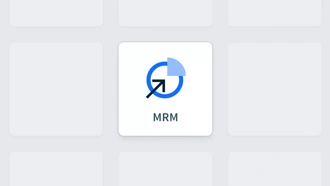DAM solutions have been described as many things over the years as technology has evolved and user expectations have shifted.
In its most distilled form, a DAM platform today is a place to create, find, and use all your digital content.
People think of media when they think DAM: images, videos, or graphics. That is a great starting point, but a DAM is not just an image or media application, it is now a vehicle for content marketing teams to use in order to deliver a complete digital experience and create a tangible business impact.
We’ve identified four ways in which a DAM solution should help content marketing operations improve: speed, collaboration, execution, and consistency.
Speed





Every team wants to get faster. “Agile marketing” is a term du jour. While it would be nice to publish content faster and with greater frequency, it’s important to also keep an eye on making other steps along the content chain faster as well. That means uploading faster, downloading faster, sharing faster, editing faster, and approving faster.
With that in mind, it’s important to measure inputs as well as outputs in content marketing operations. Metrics tend to focus on outputs: amount published, total engagements, social shares, or leads. The inputs will likely tell just as interesting of a story: average project duration, approval rounds, most downloaded vs. least downloaded assets, or most active users, just to name a few.
A good first step might be to conduct an internal study where both are measured. HubSpot and Moz, for example, collaborated for a study last year where in they sought to learn if there was a point where publishing volume began to have a diminishing return based on resources required.
By introducing periods of decreased and increased content volume, they were able to determine whether publishing frequency significantly affected the overall traffic to their blog. The overall consensus was that the change in volume had little to no impact on the traffic to the blog itself. HubSpot experienced a spike in “unsubscribes” when they upped their frequency, and Moz concluded that they could probably afford to scale their blog back slightly in order to give their team back some hours of the week.
By measuring inputs (total work on publishing) vs. outputs (change in engagement metrics), these two teams were able to avoid wasting resources in order to stay as agile as possible. It all starts with identifying potential inefficiencies and testing them, and DAM solutions offer all kinds of opportunities to identify and improve on operational inefficiencies, with the ultimate goal in mind of making teams faster and more agile.
Collaboration
For a DAM, collaboration refers to an ability to communicate on the status of assets - and the projects that they power - in the same central place where they are stored. That way, you maintain speed and efficiency by not going back and forth between your email, your DAM, your message app, or any other piece of technology that might be in play for content leading up to publish.
That’s important enough internally, but it becomes especially important when you start to consider the different parties usually involved in content marketing:
- Agencies
- Partners
- Packaging and Sales
- Franchises
- Resellers
When it comes to a third party, you can’t just drop by someone’s desk and discuss the status of the latest project in the same way that you can with a colleague. Collaboration via an online platform therefore becomes that much more important, and to maintain speed, it’s better that it occurs within the same DAM, as opposed to an outside channel like email.
Execution





Content marketing can sometimes feel like all ideation and planning, and very little doing or tangible action. If that is the case, there are too many roadblocks to execution.
DAMs can empower more team members to simply get things done. Execution in DAM refers to all the specific ways in which marketers need to use or manipulate their content before it is approved and published. Annotating a PDF or cropping an image are two examples of functions that any marketer should be able to perform without sending back to creative. A DAM that’s synced with an organization’s content processes understands the ways in which marketers need to get their jobs done, and has the functionality to match.
Unless designers and project managers actually enjoy staying up all night working, technology can enable greater execution across a content team, and in doing so can improve collaboration and speed.
Consistency
Part of the role of a DAM is to implement editorial and brand guidelines for usage. That could mean communication of rules for graphics, as in “always use this logo and never use that one”. It could also mean delivering rules for publishing, such as word counts, formatting specifications, or ways to reference a brand or product.
Consistency is a wonderful thing, but the best part is that when these guidelines are put in place ahead of time, consistency can be achieved with minimal additional resources expended doing editing work or QA. And who wouldn’t want to simplify operations? If everyone knows where to find brand guidelines and publishing guidelines, that will result in a lot fewer unnecessary questions floating around the office. In short, less wondering and more doing.
The first step in seeing improvement in content operations is defining what speed, collaboration, execution, and consistency mean to your team and organization. Every industry will experience different challenges, and every brand will have different goals, but a DAM solution has the potential to improve content marketing operations for any team in those four critical areas.
Interested in learning more? We'd love to continue the conversation on streamlining content marketing. Check out our video “Take Back Control of Your Content”.












